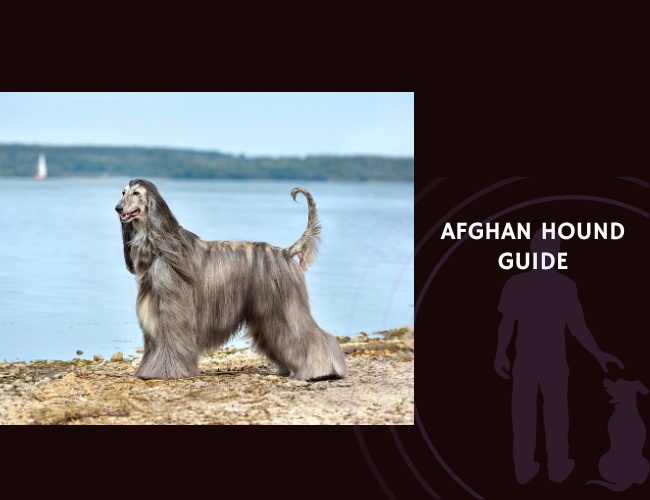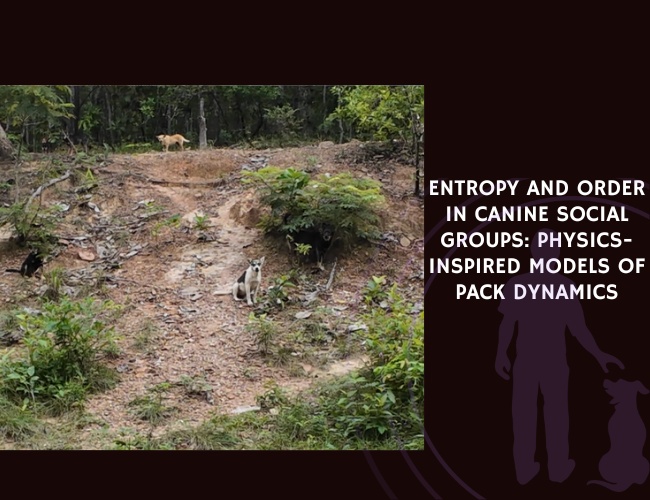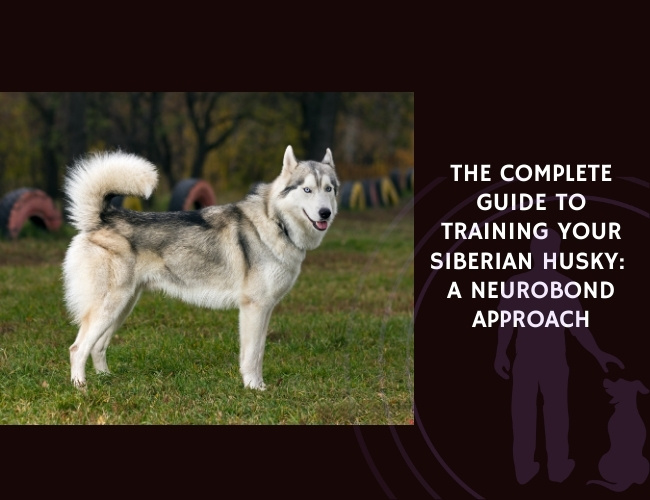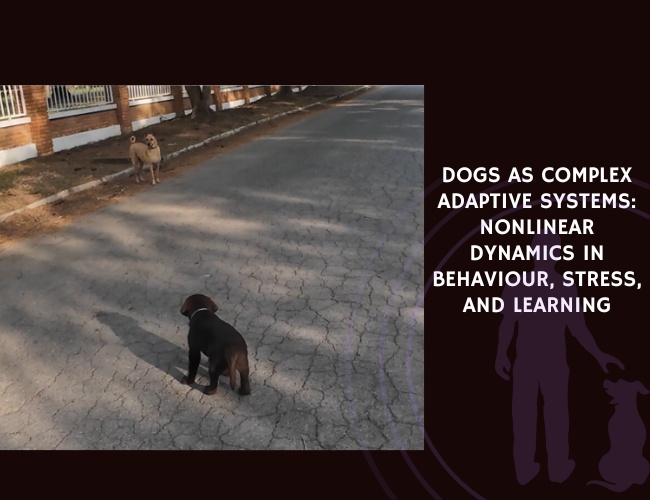Introduction to the Afghan Hound
A Glimpse into History and Origin
The Afghan Hound stands out as one of the oldest dog breeds, known for its roots in the hills and deserts of afghanistan. These dogs were developed thousands of years ago by nomadic tribes to hunt swift prey like deer and hare. Their impressive speed and sharp eyesight made them valuable partners. With a history deeply tied to survival and functionality, afghan hounds carry a regal legacy.
Physical Characteristics and Appearance
If you ask someone to picture elegance in a dog, the afghan hound comes to mind! Their silky, flowing coat drapes down their body, combining beauty with practical protection against harsh weather. Afghan hounds are tall, usually reaching 61-74cm (24-29in) at the shoulder, with a long neck and a narrow head that gives them a refined look. You’ll immediately recognize their expressive almond-shaped eyes and ring-curled tail. Their lean build and powerful hindquarters show off their athleticism and grace. It’s easy to see why this breed is often called the “king of dogs.” 😊
Temperament and Personality
Professional support is key to understanding this breed’s unique nature. Afghan hounds are known for being independent thinkers, sometimes appearing aloof or reserved with strangers. However, they can be very affectionate with their chosen family. They balance emotional detachment with an undeniable loyalty to their loved ones. Because of their strong sighthound instincts, they are alert, sensitive, and quick to react to movement. Training an afghan hound requires patience and creativity, as they prefer to make their own decisions and respond best to gentle encouragement.
Learning about the afghan hound’s character helps set realistic expectations for life with this beautiful, ancient breed. Their individuality sets the stage for understanding their deeper behaviors and daily needs.
Character & Behavior
Sensory dominance and exceptional eyesight
Afghan Hounds are famous for their superior eyesight. As sighthounds, their sharp vision helps them spot movement even at a great distance. This trait goes back to their origins as hunting companions in Afghanistan, where keen eyesight was vital. Their eyes are specially adapted to notice quick movements, giving them an edge when chasing prey in open spaces. They use sight more than smell or sound to understand their world, making walks and playtime fascinating visual adventures for both of you.
Independence and decision-making
Many people see Afghan Hounds as independent thinkers. This independence means they won’t always follow commands just because you ask—they like to decide for themselves if it’s worth their time! Sometimes, they can seem stubborn or aloof, especially if they’re not interested in a task. This doesn’t mean they aren’t smart—on the contrary, it shows strong problem-solving skills. If an Afghan Hound stops suddenly or changes direction on a walk, trust that they have carefully weighed their options.
Selective responsiveness is common. Afghan Hounds decide when to listen, often ignoring commands if something more interesting is happening. Positive reinforcement helps, but persistence and patience are key. Encouraging curiosity while working within their independent nature builds trust and cooperation.
Emotional bonds: Detachment and loyalty
While Afghan Hounds often appear reserved, they form deep bonds with the people they trust. They may not always seek constant attention or act overly affectionate, but their loyalty is strong. With their family, they show a quiet devotion, following their favorite people around the house or waiting patiently for a walk. This mix of detachment and loyalty sets the Afghan Hound apart, requiring understanding and support from those who care for them.
They enjoy affection on their own terms. If given space and respect, they will reward you with their unique, gentle companionship 😊.
Next, we’ll explore how this breed interacts with their environment and other animals, shaping their daily life and routines.
Social Dynamics
Prey Drive and Environmental Triggers
Afghan Hounds are famous for their strong prey drive. As natural sighthounds, they were bred for chasing game across open land. Their sharp eyesight and fast reaction to movement mean even a distant squirrel can spark their chase instinct. Walks may suddenly turn into sprints if they spot something interesting in the distance. This makes them both exciting and challenging companions outside. Their chase motivation and response to the world around them are deeply engrained traits. Owners need to stay alert in open or unsecured areas, as an Afghan Hound’s impulse to run often overrides training.
Intraspecific Behavior and Communication
When it comes to interacting with fellow dogs, Afghan Hounds show a unique style of communication. They use a mix of body language, play-bows, and eye contact to engage in play or set boundaries with others. While they can be playful and enjoy canine company, their social signals may be subtler than those of more outgoing breeds. Sometimes, their independence is mistaken for aloofness toward other dogs, but they simply prefer selective company rather than constant interaction. Attention to how your Afghan Hound greets and plays with others helps ensure positive encounters and avoids misunderstandings.
Suitability for Multi-Dog or Solo Households
Afghan Hounds can thrive in both solo and multi-dog households, but their success depends on their unique personality and the household environment. Some Afghan Hounds enjoy the company of other dogs, especially those with similar play styles or energy levels. However, their independent streak means they are equally content as the sole pet, provided they receive enough attention and stimulation. Careful introductions, thoughtful supervision, and understanding each dog’s needs create a peaceful home for everyone.
Understanding these social dynamics will guide owners in building positive environments and rewarding relationships with their Afghan Hound.
Training & Education
Understanding Learning Challenges
Afghan Hounds are known for their independence and unique decision-making. They often weigh every request before responding, which makes learning new commands different from training other breeds. They may take longer to retain cues, especially if lessons are not kept consistent. Generalization is another challenge—what they learn in one room may not easily transfer to new spaces or distractions. Because of this, patient and steady training methods are key.
Building Motivation
Motivating an Afghan Hound means tapping into rewards that truly matter to them. Unlike some dogs who work hard for praise or toys, Afghans often have a clear preference for special treats or the chance to chase a favorite lure. It’s helpful to experiment and observe what makes your Afghan’s eyes light up. You might notice their reward hierarchy shifts based on mood and environment. Always keep sessions upbeat and end with something positive 😊.
Managing Distractions and Enhancing Recall
Afghan Hounds are highly visual and react quickly to movement. Even a bird fluttering outside a window may pull their focus away. Training recall should always include controlled exposure to mild distractions before moving to bigger challenges. Be sure to reinforce recalls generously and never punish a late return—reliability builds from trust, not fear. Short sessions and a calm presence help balance their independent spirit with your training goals.
Nurturing the Handler Connection
The bond between handler and Afghan Hound plays a huge role in success. Trust and consistency foster their willingness to comply. While these dogs may seem aloof, building a relationship based on respect and understanding leads to greater engagement during training.
Next, we’ll explore what it takes to nurture their bodies just as carefully as their minds.
Elegant. Wild. Untamed.
A presence from another world.
Afghan Hounds don’t walk—they float. Their silky coats trail behind like history in motion. There’s something untouched in them, something ancient. You don’t own an Afghan Hound—you share space with something proud, aloof, and fiercely alive.
Beauty with a mind of its own.
They won’t obey blindly, and they won’t beg for praise. This isn’t stubbornness—it’s sovereignty. They respond when it makes sense, when respect is mutual. Every command is a question to them. Every lesson must earn their interest.



Distant gaze. Deep loyalty.
They won’t smother you with affection, but they’ll follow you with quiet eyes and silent faith. Their love isn’t loud—it’s chosen. Earn their trust, and they’ll walk beside you—not out of habit, but because they decide to.
Nutritional Requirements
Supporting Lean Body Mass
Afghan Hounds are known for their graceful, athletic build. To keep them healthy and active, their diet must focus on lean muscle maintenance. This high-mobility breed benefits from balanced meals that include quality protein and moderate fat. Look for dog foods made with chicken, lamb, or fish as the main ingredient. Such proteins help repair muscles after long exercise sessions and keep your afghan hound agile.
Complex carbohydrates, like brown rice and sweet potato, provide sustained energy for play and exploration. Remember—portion control is key! Afghan Hounds can be sensitive to overfeeding. Too much food may cause weight gain, which can harm their joints and overall health.
Boosting Coat Health and Hair Growth
The Afghan Hound’s long, flowing coat is stunning, but it needs nutritional support. Healthy fats, such as omega-3 and omega-6 fatty acids, are vital for shiny hair and moisturized skin. Fish oil or flaxseed oil can be mixed into their food to promote coat growth and resilience. Vitamins A, E, and zinc also help prevent dry skin and reduce shedding. If your dog’s coat looks dull, check their diet—nutrition often plays a big role.
Feeding Schedules for Consistent Energy
Feeding your Afghan Hound at the right times can make a big difference. Because they are active, breaking their meals into two or three feedings per day helps maintain energy levels. Always feed after exercise to lower the risk of bloat, a condition some deep-chested breeds face. Consistent schedules also support stable digestion, avoiding tummy troubles.
Balanced nutrition is more than just food—it’s a key step in keeping your Afghan Hound healthy and happy. Next, let’s explore health concerns and how to prevent common issues for this remarkable breed.
Health Concerns & Management
Endocrine Health and Hypothyroidism
Afghan Hounds can be more likely to experience hypothyroidism, a condition where the thyroid gland is underactive. Signs you might notice include weight gain without eating more, dull coat, or less activity. Regular vet check-ups and simple blood tests are the best way to spot thyroid issues early. Treatment often means a daily pill, which most dogs handle well.
Cancer Risks and Skin Disorders
Like many purebreds, Afghan Hounds may be at risk for certain types of cancer. Some cancers have genetic links and early screening could be helpful. Their silky, long coats make them stand out, but they also need special skin care. Afghan Hounds can get skin disorders like allergic dermatitis. Look for itchy, red skin or hair loss, and see your vet for advice. Good grooming and watching for skin changes help keep these elegant pups looking their best.
Eye Health: Cataracts and PRA
Their lovely eyes are more than just pretty; they can also be sensitive. Afghan Hounds are seen to develop cataracts and progressive retinal atrophy (PRA), which can lead to vision loss. Early signs might be cloudy eyes or bumping into things. Ask your vet about regular eye exams as part of your ongoing care.
Orthopedic Considerations
Agile and light on their feet, Afghan Hounds need healthy joints. Hip dysplasia is a risk, though not as common as in heavier breeds. Keep these elegant dogs at a healthy weight and give them soft bedding to protect their bones and joints. Regular, gentle exercise—avoiding big jumps—helps keep their muscles strong without straining their bodies.
Caring for an Afghan Hound means staying alert to these health issues and working closely with your veterinarian. 🐾 By keeping up with health checks and understanding breed-specific needs, you can help your companion stay happy and active for many years.
This awareness of their physical needs fits naturally into ensuring their environment suits their unique lifestyle.

Lifestyle & Environmental Needs
Space and Environmental Stimulation
Afghan Hounds thrive in environments that let them stretch their long legs and satisfy their strong instincts. At home, they truly appreciate open spaces—think large backyards or secure gardens where they can run and survey the area. This breed’s energy and hunting roots mean a cramped or small apartment often leaves them restless and bored. Space is not just about size. It’s about giving them freedom to move and explore, both physically and mentally.
To keep your Afghan Hound happy, provide plenty of toys and activities. Puzzle feeders, treat-dispensing balls, and scent trails in the yard or house keep their keen minds busy. Regular changes in activity help prevent boredom and related behaviors like chewing or barking.
Exercise Tolerance and Enrichment
Afghan Hounds need daily exercise, but not just any walk around the block will do. These dogs love quick, energetic bursts—like sprinting or chasing lures. Two to three active sessions each day are ideal, whether it’s off-leash running in a secure space or controlled games in a well-fenced area. Their long legs and graceful stride are stunning in motion, and exercise helps manage their enthusiastic energy.
Mental enrichment is equally important. Activities that let your Afghan Hound “hunt” for treats, or practice training skills, go a long way in keeping them content and sharp.
Urban Versus Rural Living
While Afghan Hounds are adaptable, they have a natural preference for rural or suburban settings. The wide spaces and varied scenery suit their sighthound instincts. Urban environments can work if owners give extra care—secure spaces for exercise, walks in quiet parks, and plenty of interactive play. City living might mean more noise and distractions, which could stress your hound. Patience and gradual adaptation help ease the transition.
Providing physical and mental engagement, wherever you live, is key to supporting their well-being and joyful spirit. 😊
Next, we’ll look at what it takes to keep their luxurious coat in top condition.
Grooming & Coat Care
Maintenance routines for a luxurious coat
Caring for an Afghan Hound’s flowing coat is both a joy and a responsibility. Their striking hair demands regular attention to keep it in top shape. Most owners find that daily brushing is best to keep tangles and mats from forming. Using gentle, long strokes with a pin brush or a wide-toothed comb reaches through the coat without damaging the fine hair. Daily brushing also helps to spread natural oils, adding both shine and softness.
Scheduled baths are part of the routine too. Afghan Hounds usually benefit from a bath every two to three weeks with a dog-friendly shampoo suited for sensitive skin and long coats. Take your time while bathing and make sure to rinse out all product, as residue can cause skin irritation or dull the coat.
Tools and techniques for effective grooming
A simple set of grooming tools will make the process easier:
- A high-quality pin brush to reach through long layers
- A wide-toothed comb for detangling stubborn knots
- Nail clippers to keep paws healthy and snag-free
- A soft towel or hair dryer (on cool, low setting) for thorough drying
Work gently to avoid hurting your Afghan. Always start brushing from the tips and work up to the roots. Mats behind the ears, under the elbows, and in the tail must be checked daily. Trimming around the feet and hocks keeps the hair neat and prevents dirt buildup.
Skin care and preventing coat-related issues
The luxurious coat provides beauty but can also hide potential skin problems. Afghan Hounds are prone to allergic dermatitis and other skin disorders, especially in humid conditions or with improper grooming. Early detection is key. Always check for redness, bumps, or soreness during grooming sessions.
Keeping the skin healthy involves a balanced diet rich in omega-3 fatty acids and regular grooming to remove debris. Make sure the coat is fully dry after baths, as moisture trapped in the fur can cause skin infections. If you see persistent itching or sores, consult your vet for advice.
With the right care, your Afghan Hound’s coat will remain a source of pride and joy, adding elegance to their unique presence. Providing consistent grooming is not only about looks but also about comfort and health, making daily care a rewarding habit.
Living with an Afghan Hound
Creating a Supportive Home
Making an Afghan Hound feel comfortable starts with the environment you provide. These elegant dogs need ample space to stretch out and move, especially since they were bred to run and chase. An open yard with a secure fence is ideal. Indoors, keep their space free of clutter to prevent their long coats from catching on objects. Soft bedding and designated rest areas will help them relax and feel safe.
Afghan Hounds are sensitive to environmental changes, so maintaining a predictable routine can reduce their stress. Keep their feeding, grooming, and exercise times consistent to help them settle in well. 😊
Integrating into Family Life
An Afghan Hound thrives when included in daily family routines. They may be independent at times, but they form strong bonds through gentle attention and shared activities. Kids and adults alike should understand their need for respectful handling. Instead of forcing play, allow your Afghan Hound to join in at their own pace.
While they might not always seek cuddles, Afghan Hounds enjoy being near their favorite people. Including them in morning walks or quiet evening moments builds trust. Remember, their loyalty comes with time and patience.
Strengthening the Handler-Dog Bond
Building a solid relationship with your Afghan Hound means embracing positive and professional support methods. Focus on calm, consistent interactions and reward-based training. Rather than rigid commands, use encouragement and patience to guide their independent spirit.
Regular grooming can double as bonding time, allowing gentle handling and eye contact. Daily walks and play not only meet their exercise needs but also reinforce your connection. When Afghan Hounds feel respected, they respond with quiet loyalty.
Transitioning from care at home, it’s important to consider what changes as your loyal companion grows into their senior years.
Senior Afghan Hound Care
Understanding Age-Related Changes
As Afghan Hounds get older, you may start to notice changes in their behavior and physical abilities. Joints may become stiff, making it harder for them to get up or enjoy long walks like they once did. Their eyesight could decline due to the risk for cataracts or progressive retinal atrophy, which are more common in this breed. Some seniors can also become less interested in daily activities, showing a preference for shorter, more restful moments ❤️. A regular check-up with your veterinarian is important to catch conditions like hypothyroidism or any signs of cancer early.
Adjusting Lifestyle for Comfort
Helping your Afghan Hound stay comfortable is key as they age. Soft bedding and easy access to favorite spots can reduce stress on their joints. Place water bowls and food dishes within easy reach, and consider ramps for getting on sofas or beds. Senior Afghan Hounds appreciate a quieter home environment with fewer sudden changes. Mental stimulation, like gentle puzzle toys or short training sessions, helps keep their minds active without overwhelming them.
Nutrition and Exercise for Seniors
Older Afghan Hounds need fewer calories to prevent weight gain, but they still benefit from foods rich in protein and healthy fats to support their lean bodies. It’s smart to pick a senior dog food formula, ensuring it has the right nutrients for coat health and joint support. Small, frequent meals help with digestion and energy stability. Exercise remains important but should be tailored—think shorter, frequent walks and gentle play rather than long, high-energy runs.
A supportive, compassionate approach helps your Afghan Hound enjoy their golden years, feeling comfortable and loved. 😊
Conclusion
Key Takeaways for Afghan Hound Owners
Owning an Afghan Hound is a special commitment. These dogs are graceful and unique, both in looks and personality. Their strong independence, keen eyesight, and deep bonds with their families set them apart from other breeds. They need regular exercise and mental engagement to stay happy and healthy. If you are considering this breed, remember that dedicated grooming, a high-quality diet, and regular health checks are essential for your Afghan Hound’s well-being. Understanding their individual quirks will make living together more enjoyable for everyone.
Reflections on the Joys and Challenges
Afghan Hounds bring joy with their playful nature, flowing coats, and dignified presence. Their independence might sometimes feel like aloofness, but they can also show heartfelt loyalty to their chosen humans. Some challenges include their need for space and tendency to chase small animals. Grooming is a daily effort and training requires patience, as they respond best to positive encouragement, not strict rules. Despite this, the special bond and elegant companionship they provide are worth the effort.
Support and Community Connections
Whether you are new to the breed or a long-time Afghan Hound enthusiast, connecting with others helps. Look for breed-specific clubs, online forums, and local dog groups to share advice and experiences. Regularly consulting with your veterinarian, trainers, and groomers ensures that your Afghan Hound is cared for in all ways. Remember, there’s a community ready to offer informative, professional, and supportive help along your journey.
Bringing home an Afghan Hound means embracing both their beauty and their individuality. By staying informed and reaching out for support, you can enjoy all the rewards of sharing your life with this remarkable breed.









